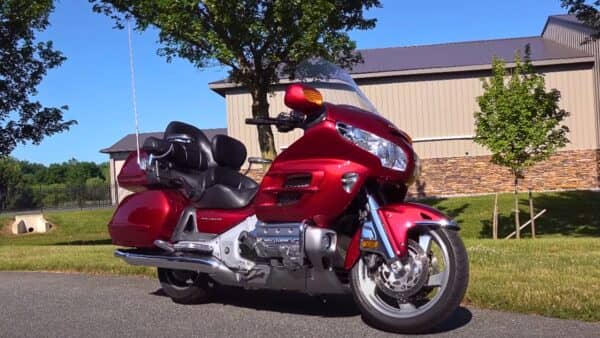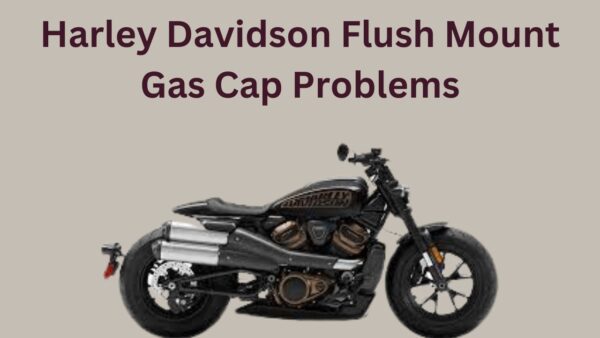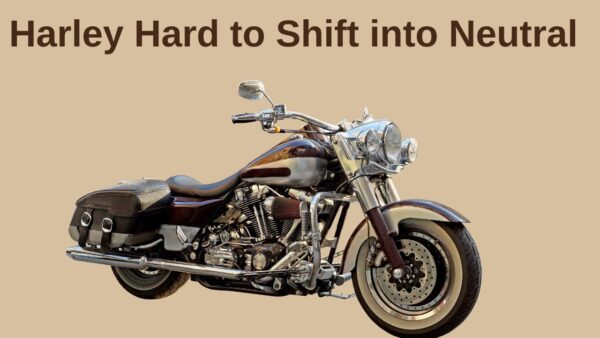The 2002 Honda Goldwing, while being a remarkable motorcycle in terms of comfort and rideability, has been noted by some owners to have its own set of issues.

This model, like any other vehicle, is not immune to problems, and potential buyers or current owners must be aware of them.
In this article, we will explore some of the common problems encountered with the 2002 Honda Goldwing.
2002 Honda Goldwing Problems
Several owners have reported persistent issues that mar the overall experience.
Common problems include issues with the braking system, frequent overheating, and a tendency for the motorcycle’s radio to malfunction.
Some owners have also encountered complications with the alternator, leading to the draining of the battery.
1. Transmission Issue
One of the common problems faced by owners is the concern with transmission.
Specifically, some riders have reported difficulty engaging gears, particularly the notorious ‘ghost shifting’ between the fourth and fifth gears.
The issue usually results in an inability to smoothly shift up or down, with the gearbox occasionally slipping into neutral.
This can be inconvenient and unsafe, especially when riding at high speeds.
It could be due to a worn shift drum, defective shift forks, or an issue with the gear itself.
In some circumstances, improper clutch adjustment or a worn clutch could be the culprit.
Our team compiled the list of What Goldwing Years You Should Avoid after a survey and research. Don’t forget to check out this list before buying any model of Honda Goldwing.
To fix the issue, begin by checking the clutch adjustment, ensuring it’s not too tight or too loose.
If the problem persists, a deeper inspection of the gearbox may be required, which should ideally be performed by a competent mechanic.
Replacing the affected parts is necessary to remedy a worn or defective shift drum, shift forks, or gears.
2. Braking System Issue
The braking system is designed to distribute braking force between the front and rear brakes and has been known to develop issues over time.
In particular, riders have reported reduced braking power, and in some cases, the brakes make a squealing sound during operation.
This can be due to multiple factors, such as worn brake pads, corrosion in the brake lines, or even issues with the brake fluid.
Here are steps to diagnose the problem:
Check the Brake Pads
Begin by inspecting the brake pads for wear. If they are worn beyond the allowable limit (less than 1mm of brake material), they should be replaced.
Inspect the Brake Lines
Look for signs of corrosion or damage. If there are any signs of wear or leaks, the brake lines should be replaced.
Check the Brake Fluid
Brake fluid should be clear and light in colour. If it’s dark or murky, it might be time for a change. Drain the old fluid and replace it with fresh, manufacturer-recommended brake fluid.
Test the Braking System
After performing these steps, test the braking system to ensure it’s functioning properly.
3. Overheating
One major issue that has been reported by some owners is engine overheating.
The problem can cause the engine temperature gauge to shoot up, stuttering performance, or even the engine shutting down.
It’s important to address overheating as it can lead to serious engine damage.
It could be due to a malfunctioning thermostat that doesn’t open when it should, preventing the coolant from flowing into the engine to reduce the temperature.
Another possibility could be a damaged or leaking radiator, which results in a loss of coolant.
Even a clogged radiator can lead to overheating as it hampers the necessary heat exchange.
However, a faulty water pump or broken fan belt can also cause overheating issues.
If you’re facing an overheating issue, it’s crucial to stop the bike and let it cool down.
Do not attempt to remove the radiator cap while the engine is hot, as it can lead to severe burns from the pressurized coolant.
Once cooled, check the coolant level in the radiator and refill if necessary. It’s also advisable to inspect the radiator for any signs of leaks or blockages.
4. Issue With Alternator
One common issue with the 2002 Honda Goldwing is related to the alternator.
The alternator is a vital component of the motorcycle’s electrical system, responsible for generating power to charge the battery and run electrical devices.
Issues with the alternator can cause a weak or dead battery, dimmed lighting, or electrical accessories not functioning properly.
Insufficient power is generated to keep the battery charged, and the motorcycle may eventually fail to start.
To troubleshoot the issue, check the alternator’s output with a voltmeter. Connect the voltmeter to the battery and start the bike.
A reading above 13.2V (but below 14.8V) when the engine is running indicates the alternator is working correctly. If the alternator fails, replacement is often the most effective solution.
This involves disconnecting the battery, removing the alternator’s mounting bolts, and disconnecting the wiring harness.
Install the new alternator, reconnect the wiring, and secure it with the mounting bolts. Finally, reconnect the battery and test the system to ensure it is functioning correctly.
5. Steering Head Bearings
These bearings play a crucial role in the smooth operation of the motorcycle, allowing the front wheel and handlebars to rotate smoothly.
When they fail, they can lead to an array of problems, including strange handling characteristics, front-end instability, and even a dangerous wobble at high speeds.
Here are the solutions to fix the issue:
Identification
Signs of a problem with the steering head bearings can include a knocking sensation during low-speed manoeuvres or a vague feeling in the handlebars at high speeds.
If the handlebar movement feels notchy or if there is noticeable play when you push and pull the front forks, this could also be a sign of worn-out bearings.
Checking
If you suspect an issue with the bearings, it’s important to first check the adjustment.
With the motorcycle on a centre stand and the front wheel off the ground, move the handlebars from side to side.
If there’s too much resistance or a notchy feeling, the bearings might be too tight. On the other hand, if there’s a noticeable play in the handlebars, they might be too loose.
If any of these conditions are present, an adjustment may correct the problem.
Replacement
If adjusting the bearings doesn’t solve the issue, they may need to be replaced. This involves removing the front fork and handlebars and then removing the old bearings.
The new bearings should be greased before being fitted. Once the new bearings are in place, reassemble the front fork and handlebars.
Post-Replacement Check
After replacing the steering head bearings, it’s important to recheck the adjustment and then take a short test ride to confirm the problem has been resolved.
6. Malfunctioned Radio
The issues may present as intermittent sound, a complete loss of sound, or the inability to tune into any radio stations.
This malfunction is predominantly caused by internal issues within the radio unit itself, which can be attributed to age, wear, and tear.
To resolve such a problem, firstly, you will need to diagnose it. Start by checking the fuse box.
If a fuse related to the radio system has blown, replace it. Check the wiring harness going to the radio for any loose connections or corroded wires.
If the issue persists, you may need to remove the radio for a more in-depth inspection.
To remove the radio, follow these steps:
- First, remove the seat.
- Next, disconnect the battery before proceeding further.
- Remove the fairing inner panel.
- Once the panel is off, you will be able to see the radio unit. Unplug the cables connecting to the radio.
- Using a screwdriver, remove the screws holding the radio unit in place.
You can also check the common problems with the Honda ST 1300, Trail 125, NC750X & NC700X

Ahtsham Younas is a passionate blogger and content writer. He loves to ride motorcycles and learn the mechanical process behind the motorcycles.
He has been writing articles in the motorcycle industry since 2019 and has learned many things about motorbike niches.


